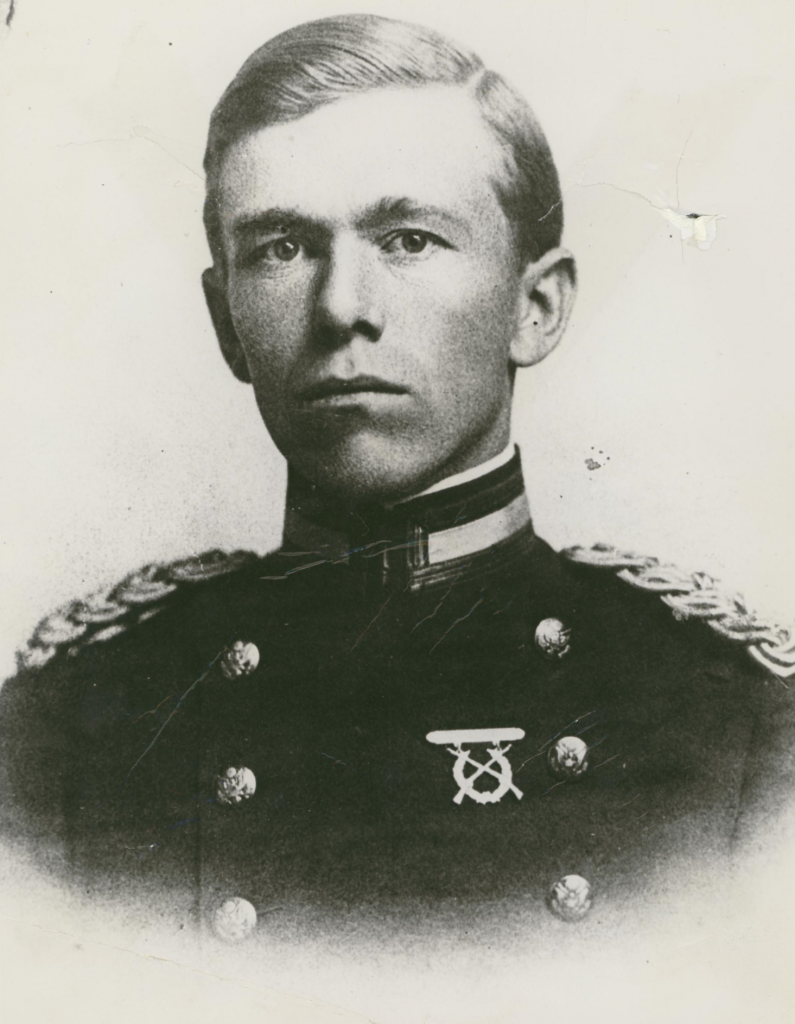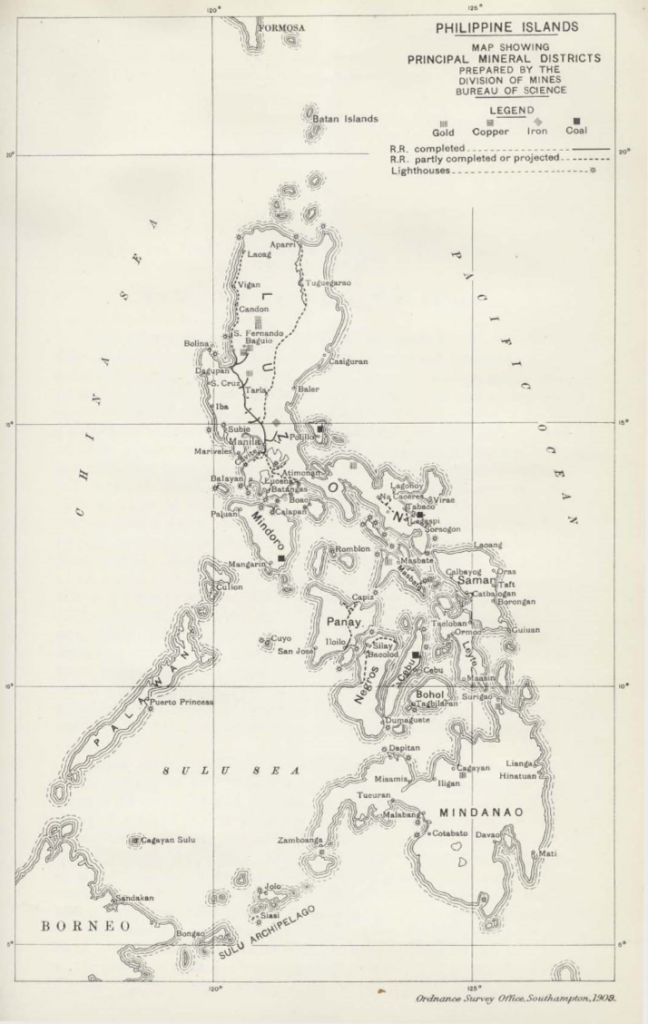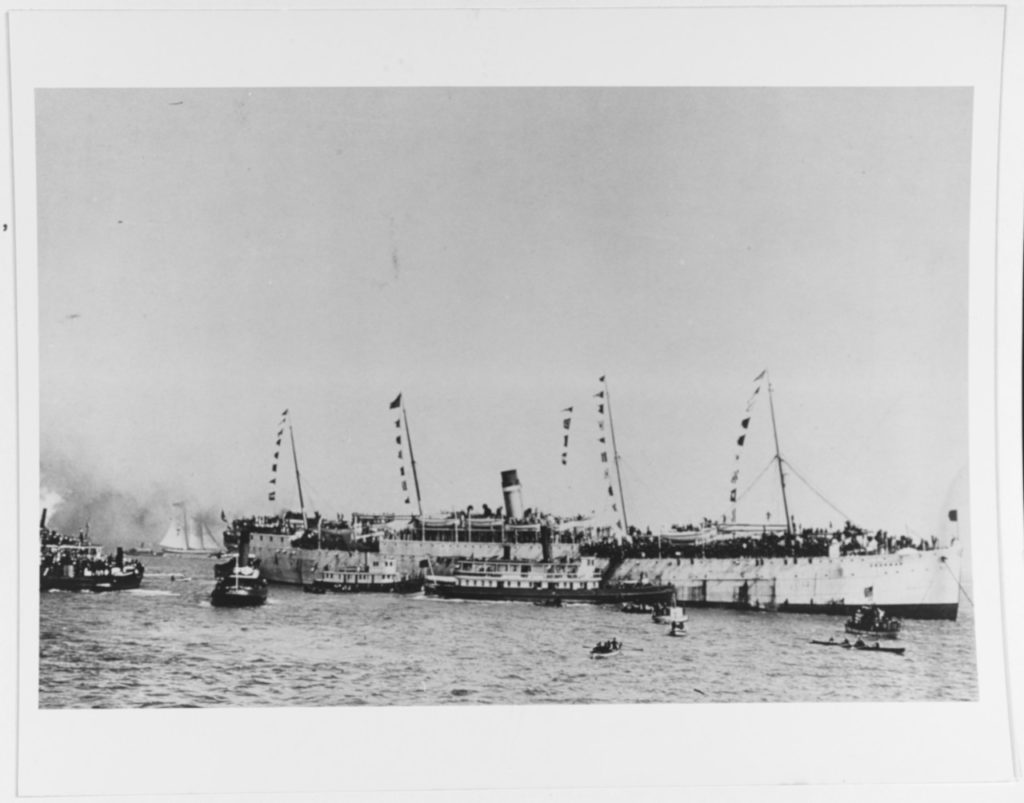Serving in the Philippines Part 1: Getting There

Upon commission in the U.S. Army as a second lieutenant in 1902, George Marshall’s first station was on the island of Mindoro, in the Philippines, with Company G of the 30th Infantry.

Map courtesy Perry-Castañeda
On March 17, 1902, Marshall traveled by train from New York to San Francisco, and boarded the U.S. Army Transport ship the Kilpatrick. The Kilpatrick was 371 feet long, and could carry 40 officers, 800 enlisted, and 800 horses. The steamer had a refrigerator capacity of 1,000 pounds — new and appreciated technology (Maine Memory Network).

Photo courtesy Naval History and Heritage Command
On “April 12. — Transport Kilpatrick sailed from San Francisco for Manila with 15 officers and 127 enlisted men. Maj. Z. W. Torrey, Twenty-fourth Infantry, commanding. May 11. — Transport Kilpatrick arrived at Manila from San Francisco with 15 officers and 127 recruits” (War Dept).
For such a long trip crossing the Pacific Ocean, the steamer needed to make a stop for supplies. “Honolulu, being at the ‘Crossroads of the Pacific’, was a natural layover for ships to buy provisions, fresh water, and fuel for steamships“ (Mak, 2015, p. 14).
Lt. Marshall found the Pacific crossing boring. “It was rather interesting on the boat There were quite a few officers who had been volunteers in the Spanish-American War and the Philippine Insurrection and now had received Regular commissions; and some of them were very industrious in telling me—particularly who had come from civil life—how I should function. They understood it all. Later on I discovered they knew damn little” (Marshall, 1981, p. 23).
Marshall arrived in Manila and stayed in the Hotel de Oriente only a day when he discovered on the second morning that the inter-island boat that would take him to Mindoro was leaving. He barely had time to collect his luggage and “an unfinished tropical uniform ordered the previous day from a Manila tailor before dashing for the boat dock. In his haste he dropped a pocket of the blouse and one leg of the pair of trousers but caught the last launch” that took him out to the inter-island boat, Isla de Negros.
Because the Philippines was experiencing a cholera plague, the boat had to drop anchor off the Bataan Peninsula for five days, as the incubation period for cholera can be up to five days. Weighing anchor and heading past Corregidor, the boat ran into a severe storm, the “damnedest typhoon you ever saw” (Pogue, 1963, p. 72).
Marshall telling the harrowing tale of the storm in an interview years late:
I am not exaggerating when I say that the boat would tilt over until the longboats on the upper deck would go into the water. It would just poise there for a little bit as if it would never go back again. Then it would roll to the other side. The captain got frightened or sick. Anyway he left the bridge and went to his stateroom … The Filipino at the wheel got his ribs mashed and he was gone.
That left nobody to steer and nobody to command. So a young fellow, Lieutenant Daly, who was going back to his station at Calapan (on Mindoro), and I took over the boat. The two of us got the wheel and, of course, turned it .in the wrong direction. We were heading toward a forbidding-looking mountain before we got straightened out and turned the other way.
The water also poured into the engine room through the open ventilated space in the middle section of the deck. During the worst of it the Filipinos started to leave the engine room. We leaned over the hatch and with our guns threatened them and, as I recall, shot once or twice. I wouldn’t have stayed myself if I had been in that position. It was a nerve-wracking experience but finally with this Spanish mate we made it (Pogue, 1963, p. 72).
Finally, nearly six weeks after leaving New York, Lt. George Marshall had arrived on Mindoro. And although it was very different from home, he must have been glad to permanently be on land.
Coming up: Serving in the Philippines Part 2: Other duties as assigned
Bibliography:
Maine Memory Network. (nd). Souvenir of the USAT Kilpatrick. Retrieved from: https://www.mainememory.net/artifact/22589
Mak, B. (2015, February 3). Creating “Paradise of the Pacific”: How Tourism Began in Hawaii. Retrieved from The Economic Research Organization at the University of Hawaii website: https://uhero.hawaii.edu/
Marshall, G.C., Bland, L. (Ed.), & Stevens, S. (Ed.). (1981). The Papers of George Catlett Marshall: “The Soldierly Spirit,” December 1880 – June 1939 (Volume 1). Baltimore, MD: Johns Hopkins.
Naval History and Heritage Command. (nd). NH 52059 USAT Kilpatrick [photograph]. Retrieved from: https://www.history.navy.mil/our-collections/photography/numerical-list-of-images/nhhc-series/nh-series/NH-52000/NH-52059.html
Philippine Islands 1909 [Map]. Retrieved from the University of Texas at Austin Perry-Castañeda Library Map Collection website: https://legacy.lib.utexas.edu/maps/historical/philippine_islands_1909.jpg
Pogue, F., & Harrison, G. (1963). George C. Marshall, Vol. 1: Education of a General, 1880-1939. New York: Viking.
University of Michigan Special Collections. (nd). Hotel Oriente, Philippines, 1900-1902 [photograph]. Retrieved from https://www.lib.umich.edu/special-collections-research-center
War Department. (1903). Annual Reports of the War Department for the fiscal year ended June 30, 1902 [Internet Archive version]. Retrieved from http://www.archive.org/stream/annualreportswa12deptgoog/annualreportswa12deptgoog_djvu.txt
